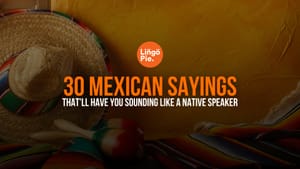Lately, Spanish-language shows and movies have become super popular, grabbing the attention of people all over the world. Documentaries are also a big part of this trend because they give us a deep look into different cultures, important historical events, and current social issues. They don't just entertain us; they also teach us about the world.
In this post, I'm going to share some of the best Spanish-language documentaries you can stream in 2024. From fascinating stories about history to eye-opening films about today's challenges, these documentaries show us the lives and stories of Spanish-speaking communities around the world. Let's dive in and explore these must-watch documentaries together!

Why Watch Spanish Language Documentaries?
Cultural and Linguistic Immersion
Watching Spanish language documentaries is a great way to immerse yourself in the language and culture. You get to hear the language spoken naturally, picking up on the nuances and rhythms that textbooks can't teach. Plus, you get a front-row seat to the customs, traditions, and daily lives of Spanish-speaking communities, enriching your understanding and appreciation of their culture.
Diverse Perspectives and Storytelling Styles
Spanish language documentaries offer a variety of perspectives and storytelling styles that you might not find in mainstream media. These films often tackle unique topics and present them in ways that are fresh and engaging. Whether it's a personal story of triumph or a deep dive into a societal issue, these documentaries provide viewpoints that broaden your horizons and challenge your thinking.
Educational Benefits – History, Politics, Social Issues
One of the biggest benefits of watching documentaries is their educational value. Spanish language documentaries cover a wide range of topics, including history, politics, and social issues. They can teach you about significant historical events, current political landscapes, and social challenges faced by Spanish-speaking countries. By watching these documentaries, you gain a deeper understanding of the world and the complex issues that shape it.

Best Spanish Language Documentaries to Stream in 2024
Spanish language documentaries not only provide entertainment but also offer valuable insights into Spanish-speaking cultures and histories. Here are some of the best Spanish language documentaries to watch in 2024:
1. The Silence of Others
"The Silence of Others" is a powerful documentary that follows the struggle of victims of Spain's Franco-era regime as they seek justice for crimes committed during his dictatorship. Directed by Almudena Carracedo and Robert Bahar, it reveals the country's ongoing battle with its historical memory.
Topic: The film delves into Spain’s historical memory movement, the lingering effects of Franco's rule, and the fight for justice by the regime's victims.
Streaming Platforms: Available on Netflix and Amazon Prime.
2. Nuestro Planeta (Our Planet)
"Nuestro Planeta" is a stunning documentary series focusing on the beauty and fragility of the natural world. Narrated in Spanish, it highlights the importance of conservation efforts around the globe.
Topic: Specific episodes emphasize Spanish-speaking regions such as the Amazon rainforest and Patagonia, showcasing their unique ecosystems and wildlife.
Streaming Platforms: Available on Netflix.
3. The Endless Trench (La trinchera infinita)
This film tells the story of Higinio and Rosa, a couple who go into hiding during the Spanish Civil War to avoid persecution. Higinio remains hidden for decades, fearing reprisal even after the war ends.
Topic: The documentary portrays the long-lasting impact of the Spanish Civil War on individuals and families, capturing the intense fear and resilience of those who lived through it.
Streaming Platforms: Available on Netflix.
4. Lorena, Light-Footed Woman (Lorena, la de pies ligeros)
This documentary focuses on Lorena Ramírez, a Rarámuri woman from Mexico, who competes in ultramarathons wearing traditional sandals. It highlights her incredible athleticism and the rich cultural heritage of the Rarámuri people.
Topic: The film celebrates indigenous culture and provides a rare look into the lives of the Rarámuri community.
Streaming Platforms: Available on Netflix.
5. Cocaine Coast (Fariña)
"Cocaine Coast" chronicles the rise of drug trafficking in Galicia during the 1980s. It offers a gripping look at the impact of the cocaine trade on the local community and Spain as a whole.
Topic: The documentary sheds light on Spain’s socio-economic landscape during the rise of the drug trade and the subsequent law enforcement efforts to combat it.
Streaming Platforms: Available on Netflix and Amazon Prime.
6. The Spanish Earth
This classic documentary was created during the Spanish Civil War and provides a vivid account of the conflict from the Republican side. It was directed by Joris Ivens and features narration by Ernest Hemingway.
Topic: The film covers the Spanish Civil War, the struggles of the Republican fighters, and the broader impact of the war on Spanish society.
Streaming Platforms: Available on various classic film streaming platforms and the Criterion Channel.
7. 13th (Treceavo)
Ava DuVernay’s critically acclaimed documentary "13th" has been dubbed in Spanish, making its powerful message about systemic racism in the United States accessible to Spanish-speaking audiences.
Topic: The film draws parallels between the U.S. prison system and historical oppression, offering insights relevant to discussions about racism in Spanish-speaking countries.
Streaming Platforms: Available on Netflix.
What Are the Best Spanish Documentaries for Spanish Learners?
For Spanish learners, several documentaries offer engaging content and clear language suitable for language acquisition. For example, "The Silence of Others" (El Silencio de Otros) provides historical and cultural insights through its emotional storytelling. "Nuestro Planeta" (Our Planet) offers vocabulary related to wildlife and the environment in a visually stunning nature documentary format. "Lorena, Light-Footed Woman" (Lorena, la de pies ligeros) explores indigenous culture with straightforward language. "13th" (Treceavo), available in Spanish-dubbed version, delves into systemic racism with educational and linguistically rich content. "Cocaine Coast" (Fariña) provides conversational Spanish practice within a gripping narrative.
Additionally, any documentary available on Lingopie is tailored for language learners, making it an excellent resource for Spanish learners seeking immersive content to enhance their language skills. Through watching these documentaries, Spanish learners can improve their language proficiency while enjoying captivating stories from Spanish-speaking cultures.
Also read:

Where Can I Watch Spanish Documentaries?
You can find Spanish documentaries on various streaming platforms catering to international content. Netflix, for instance, offers a diverse selection of Spanish-language documentaries across different genres. Similarly, Amazon Prime Video features a substantial library of Spanish films and documentaries. HBO Max includes Spanish-language documentaries as part of its extensive content collection, and Disney+ provides Spanish-dubbed or subtitled documentaries, particularly within its National Geographic section.
Additionally, other options include subscription services like CuriosityStream, Sundance Now, and Mubi, which focus on international content, including Spanish-language documentaries.
Can I Learn Spanish by Watching Documentaries with Subtitles?
Yes, learning Spanish through documentaries with subtitles can be quite effective. This method allows you to immerse yourself in the language while providing visual context through subtitles.
To get started, you might watch with subtitles in your native language to grasp the overall storyline. As you become more comfortable, switch to Spanish subtitles, which help you associate spoken words with their written forms. Don't hesitate to pause or rewind to catch unfamiliar words or phrases, and consider taking notes on new vocabulary or expressions for further review.
Platforms like Lingopie offer interactive subtitles, enabling you to click on words for instant translations and access additional language learning tools. With consistent practice, watching documentaries with subtitles can significantly enhance your Spanish language skills.
Tips For Using Documentaries To Learn Spanish
To enhance your viewing experience, here are some tips on how to use subtitles and language settings effectively:
- Subtitles: Most streaming platforms allow you to enable subtitles in various languages. Look for the "CC" (Closed Captioning) or subtitle option in the playback menu.
- Audio Settings: You can often switch the audio to Spanish if the documentary offers multiple language tracks. This is useful for language immersion.
- Customizing Subtitles: On platforms like Netflix, you can customize subtitle appearance, including font size and color, to make reading easier.
- Language Learning: Watching with Spanish audio and English subtitles (or vice versa) can be a great way to improve your language skills.
Watch Spanish Documentaries and Learn Spanish with Lingopie!

If you wish there were a way to combine entertainment with language learning, then you haven't met Lingopie yet!
Lingopie is specifically designed to help users learn languages through watching TV shows, movies, and documentaries. Here’s what makes Lingope the best immersive language learning platform:
- Interactive Subtitles: You can click on words in the subtitles to get instant translations and definitions, helping you learn new vocabulary in context.
- Language Learning Tools: Lingopie offers features like flashcards and quizzes based on the content you watch, making it easier to retain new words and phrases.
- Diverse Content: It has a wide range of Spanish-language documentaries and TV shows to keep you engaged while you learn.
Download Lingopie from the App Store or Play Store now and get a FREE 7-day trial!









![What’s The Best Way To Learn Spanish? [5 Best Tips]](/blog/content/images/size/w300/2025/04/Best-way-to-learn-Spanish.jpg)
![3 Rules For Using Spanish Accent Marks: A Complete Guide]](/blog/content/images/size/w300/2025/04/Spanish-accent-marks.jpg)